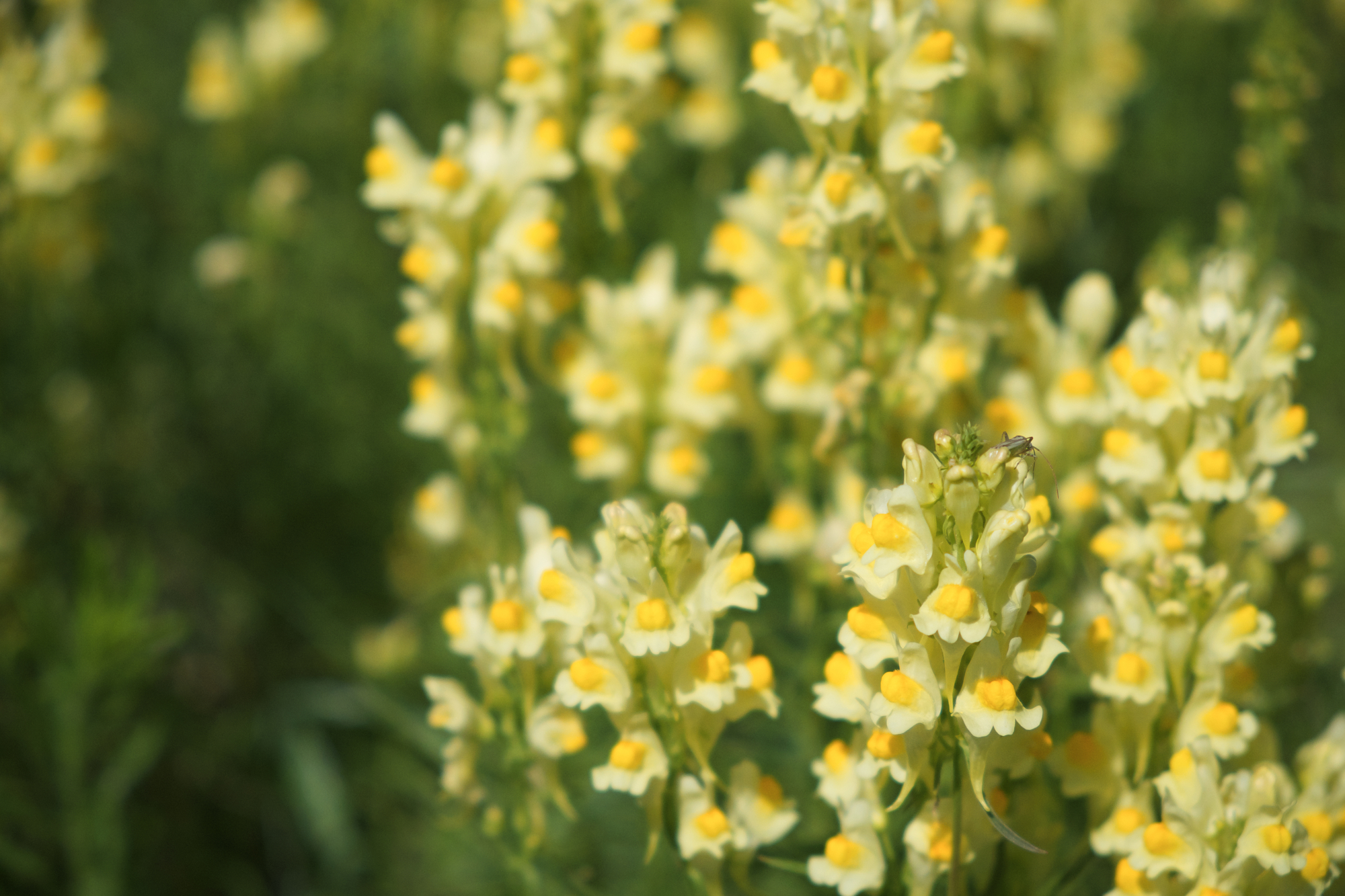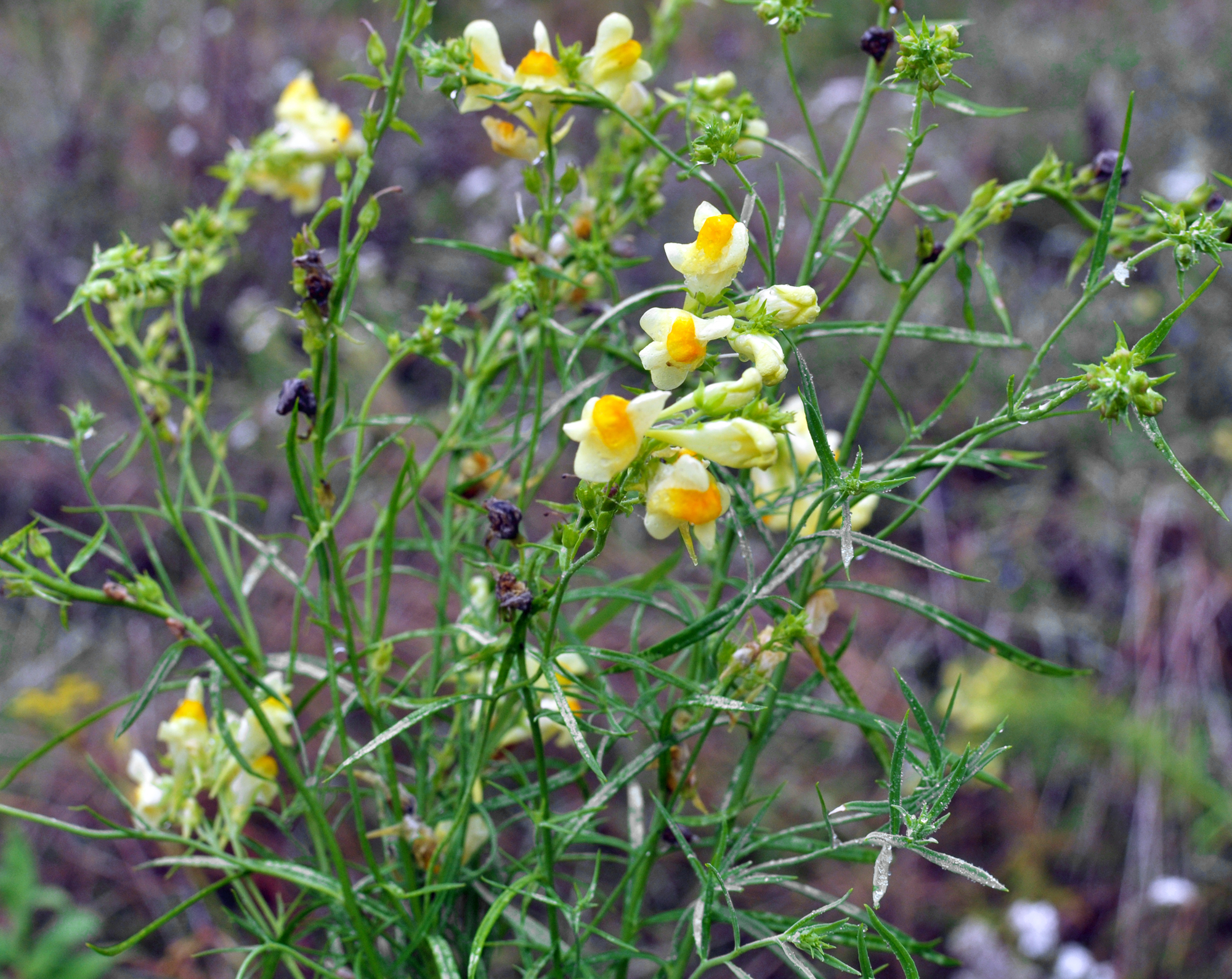The name “Toadflax” is mostly used to refer to “Linaria vulgaris”. However, the Linaria genus actually encompasses over 600 species of plants. The genus name “Linaria” comes from a Greek word meaning “lion’s mouth”. The species name “vulgaris”, derived from Latin, means “common”. Toadflax is also sometimes called rabbit flower, butter-and-eggs, wild snapdragon or eyebright.
Although common toadflax has been cultivated as a garden flower in the UK and United States for over a century, it is not as well known as other common garden flowers such as roses and tulips.
Common Toadflax Identification
Toadflax (linaria vulgaris) is an annual flowering plant that grows well in disturbed areas, often found alongside roads. The plant has thick, succulent stems that are greenish-yellow in colour. Stems branch out widely at the base and can reach up to 80 centimetres in height. The leaves are lance-shaped, also thick and succulent, with a serrated edge. At the bottom of each leaf, stem are whorls of three leaves which are larger than the main lanceolate leaves. The flowers are pale yellow or orange with five petals each.

Where Does Toadflax Grow?
The yellow toadflax plant is most commonly found throughout North America and northern Europe. The plants are typically found growing along road verges, waste places, untilled areas, and on the banks of ditches. It is also widespread on disturbed and cultivated land.
Toadflax prefers full sun though flowering will be sparse in some shade. It prefers well-drained, sandy soil, though it will tolerate heavy clay soils as long as it is not standing stagnant water. Common toadflax thrives in poor soils but is easily killed by salt, so if your soil has high salt content, you should plant this herb where it won’t be exposed to the wind or rain. The plant also has a shallow root system, so it can easily be pulled out if you want or need to relocate it.

What Is Toadflax Used For?
Common toadflax has several uses that date back centuries. The roots, leaves, and flowers of the plant are all used for different culinary and medicinal purposes. Many of the natural chemicals are believed to have medicinal properties, including antibacterial, antiviral, anti-inflammatory, antiseptic, blood clotting, cholesterol-lowering, wound healing and wound healing stimulant properties. Here are some of the most common toadflax uses:
- The flowers are edible and can be found most notably at various Asian restaurants, where they are often served as a garnish or on top of spinach noodles (called hiyashi chuka).
- The roots are also edible, being used in salads in some cultures. These roots have a slightly bitter taste due to the presence of linamarin, which is similar to Vitamin C. This substance is not toxic but may result in mild gastrointestinal irritation when over-consumed.
- The root is known to have fever-reducing properties due to its ability to induce sweating, making it a great remedy for colds, flu, and lung diseases.
- The herb is often used as a diuretic to treat kidney stones or urinary tract problems. It can also be used as an expectorant to help with bronchitis and asthma.
- It has mild sedative properties, which can help with insomnia or help calm nerves.
- Common toadflax has been used in traditional herbal medicines for conditions including gouty arthritis, fevers, itching skin diseases and coughs.
- When eaten, prepared parts of linaria vulgaris are said to provide relief from asthma by reducing inflammation in the bronchial tubes and thus helping rush air into the lungs for easier breathing.
- Either a leaf tea or oil pressed from the plant is often used as a treatment for inflamed eyes.
Pollination
Bees are the most common toadflax pollinators, but bumblebees can also be an effective pollinator. Yellow toadflax flowers are very attractive to bees and other strong insects, which consequently spread pollen from flower to flower for cross-pollination.
Additional Resources
Sources and References
- Toadflax (Common) Linaria Vulgaris – plantlife.org.uk
- Common Toadflax Plugs – naturescape.co.uk
Sam loves to learn about animals and their habitats. He has been a nature lover from a very young age, and has been writing papers and articles about wildlife for as long as he can remember.
